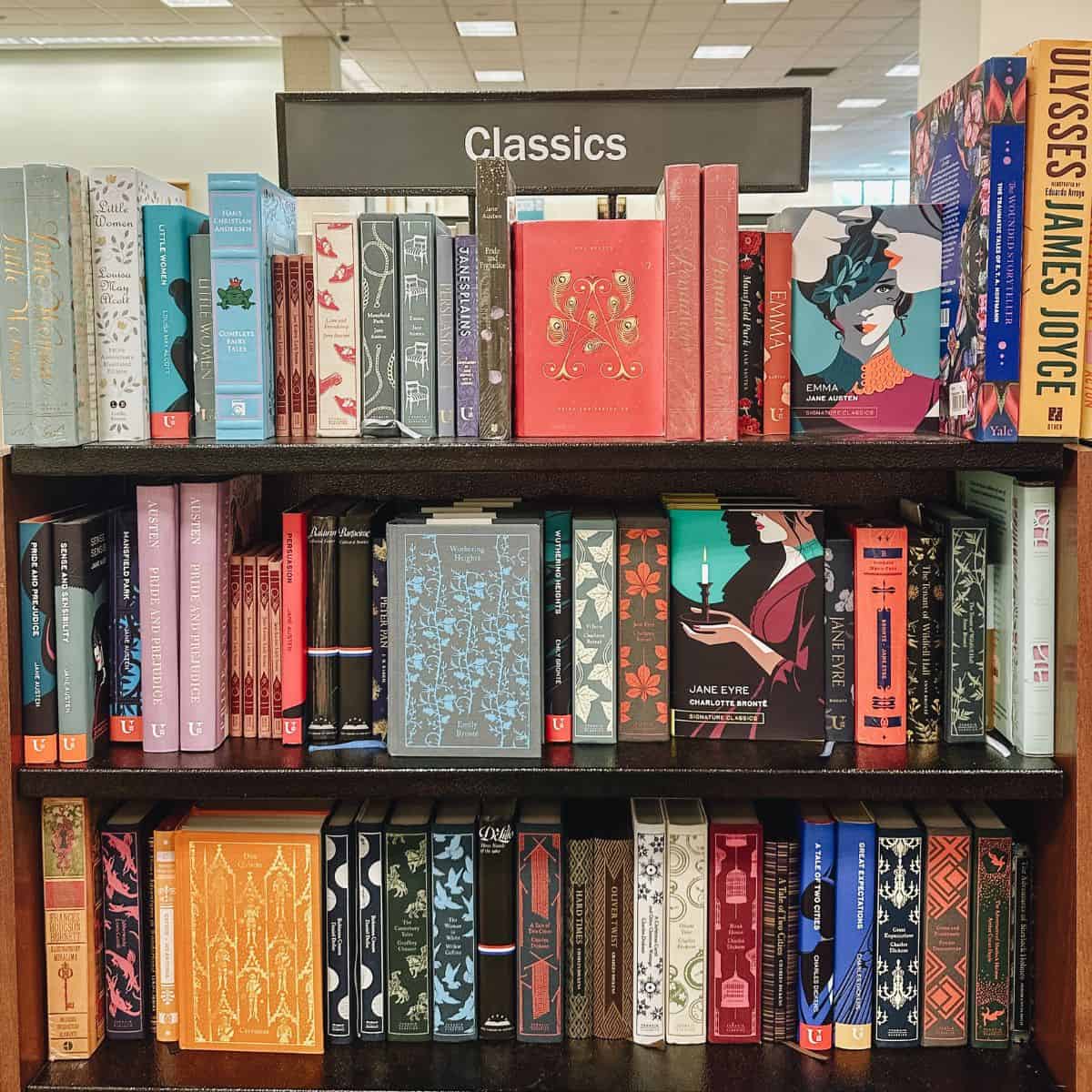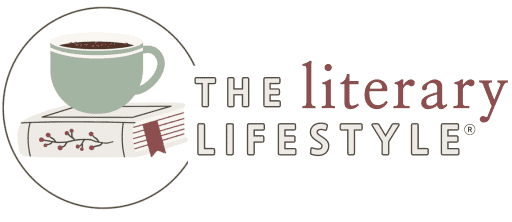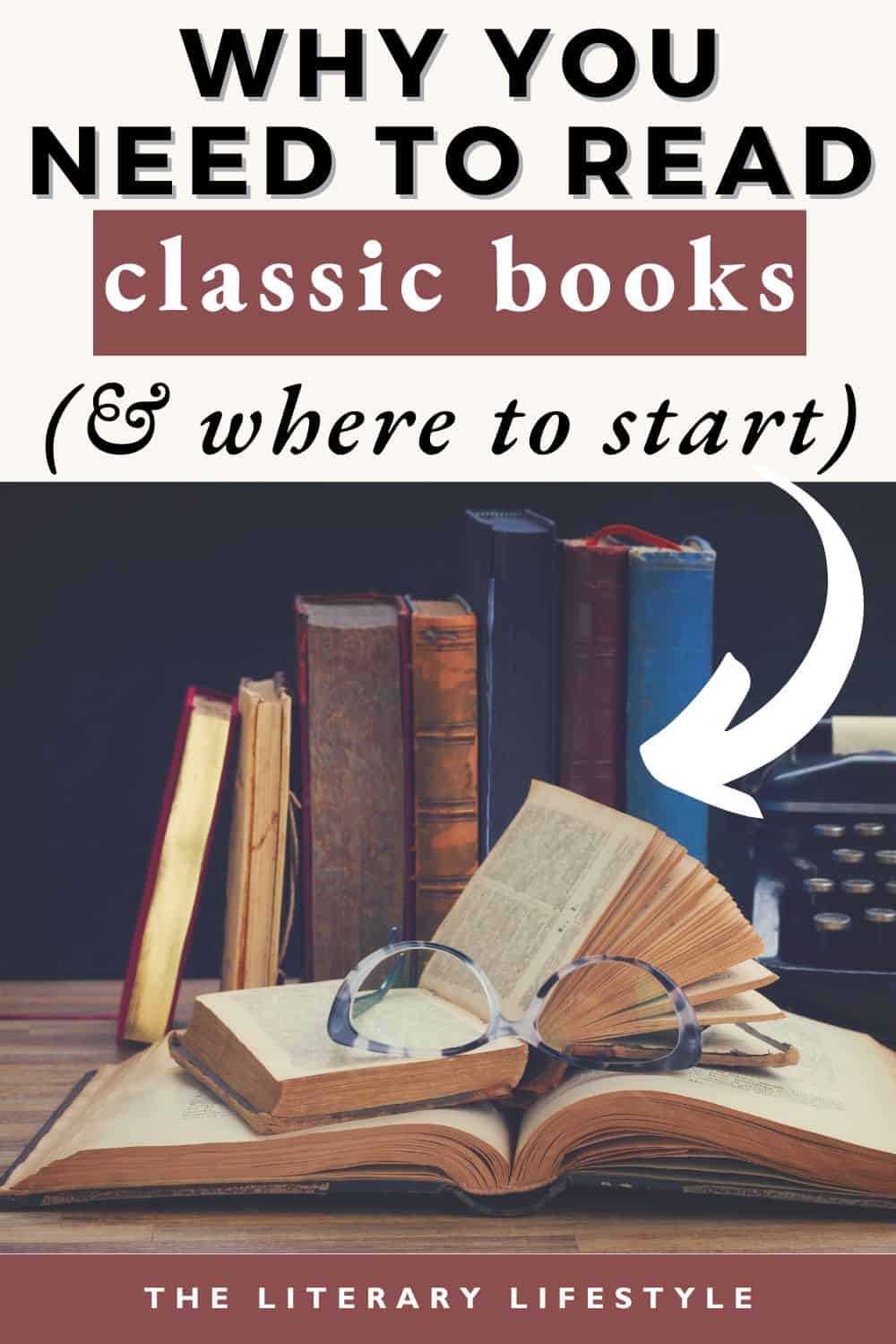If you want to know where to start reading classic books but feel confused or intimidated, get ten easy tips below to master your classic literature list like a pro.

This is one of the most common questions I get, so I aim to answer it fully for you from my personal experience and education.
First, I will answer a few frequently asked questions about reading the best classic books, then I share my favorite hacks on where to start reading classic books along with some book recommendations as well.
Trust me, reading classic books will be fun and meaningful when you follow this guide!
Frequently Asked Questions About Where to Start Reading Classic Books
To make reading classic books easy, start with a classic for children or teens, a short classic and/or a more modern classic with language that is easier to understand.
A few easy tips to read a classic book effectively are to read slowly, take notes, research the historical context, engage with a book club, and utilize guides while you read.
Classic books can be hard to read because they are often long, take place in different places and times, utilize literary devices like symbolism, and are written with language that is not common to that used today.
Where to Start Reading Classic Books
1. Start with easy classics.
2. Read slowly.
3. Take notes.
4. Read alongside a summary or analysis.
5. Research the context.
6. Listen to the audiobook.
7. Watch the movie or tv adaptation.
8. Read a modern book adaptation.
9. Consider your personal preferences.
10. Join a book club.
1. Start with classics that are easy to read.
If you’re nervous or intimidated by reading classic books, start by reading easy classic books for beginners first. It’s a quick win that will give you momentum!
So, what makes a classic easy to read?
Try easy classic books for teens or children, short classic books you can read in a day, and more modern classic books (20th century versus 19th century) in which the writing is more similar to today’s popular novels.
To get you started, here’s a list of a few classic short novels to read are:
- 1984 by George Orwell
- Adventures of Huckleberry Finn by Mark Twain
- And Then There Were None by Agatha Christie
- Anne of Green Gables by L.M. Montgomery
- The Bell Jar by Sylvia Plath
- A Christmas Carol by Charles Dickens
- The Great Gatsby by F. Scott Fitzgerald
- Harry Potter and the Sorcerer’s Stone by J.K. Rowling
- Little Women by Louisa May Alcott
- Of Mice and Men by John Steinbeck
- The Secret Garden by Frances Hodgson Burnett
- To Kill a Mockingbird by Harper Lee
Want more ideas? Check out my list of easy classic books for beginners.
On the contrary, a book like Moby Dick by Herman Melville is not just really long but also widely considered to be really difficult. So, save that one for later!
2. Read slowly.
Another helpful tip for reading the classics list is to read slowly. Set a reading goal of just a few pages a day. I like to focus on ten to twenty pages at a time when I read great classic literature because I can generally accomplish this in under thirty minutes of time and it’s still enough pages that it likely won’t take me FOREVER to finish the book.
One good book to read slowly is One Hundred Years of Solitude by Gabriel Garcia Marquez. It’s over 400 pages, has elements of magical realism and historical context, is a Noble Prize winner, and is generally considered to be required reading for all people across the world. All of these facts make it one of the best classic books to read at a manageable pace, so you can better understand and savor it.
3. Take notes.
I’m urging myself more and more to take notes when I’m reading these days. Even my favorite non-classic novels can become confusing with a large cast of characters, multiple timelines, or the like.
I recently purchased longer, lined Post-it Notes to stick in the front of each book while I read to keep track of these things for quick and easy reference.
4. Read alongside a summary or analysis.
One of the most helpful tips on how to read a classic novel is to read each chapter alongside a detailed summary and/or an analysis of elements like characters, setting, symbols, and themes.
For example, I wrote an analysis of The Glass Menagerie as a memory play.
This is exactly how I got through the famous book Beloved by Toni Morrison — without a doubt a great American novel, but also one that’s written very poetically, which is difficult for my very logical mind to grasp. Not only did I “get through it” but it remains a book I still often think about to this day, so it was definitely worth the extra step.
Related Post: Quotes from Beloved
I take no shame in this whatsoever, and I don’t think you should either! We are all different people from different places, times, and experiences, so things are bound to resonate differently.
5. Research the context.
When reading classic books, which are so often set in other times and places, it may also help you to briefly research the historical, cultural, and political context to better understand it.
I don’t mean a deep dive — just a general sense of what was happening. It may explain a lot of questions you have about a particular work of the great classic authors.
For example, if you’re reading a big book like the masterful tale of Don Quixote by Cervantes, it would likely help to understand a bit more about Spain, the early 1600s, and the nobility structure around which the novel revolves.
6. Listen to the audiobook.
Audiobooks are some of the best books to start your reading habit and make it through your classical reading list with ease. They can be SO immersive, especially when read well. I particularly love to listen to audiobooks read by famous actors, as they are really great at inflecting emotions into words and speaking clearly.
For example, Audible has tons of these options. The audiobook version of Breakfast at Tiffany’s read by actor Michael C. Hall is one of my favorite audiobooks of all time (out of hundreds to which I have listened), and I also personally listened to Sense and Sensibility as read by British actress Rosamund Pike (who starred in the movie version of Pride and Prejudice).
Audiobooks of the best classic novels can also be helpful to listen to WHILE you read a digital or paper copy.
7. Watch the movie or tv adaptation.
One of my personal favorite ways to read the classics is to watch a movie (or tv) adaptation either before, during, or after reading the book.
Jane Austen’s books have especially great adaptations because her classic romance novels so often have beautiful settings, easier dialogue, and famous stars to set the scene and be memorable for you.
You can even test out a really modern adaptation, like the 90s teen hit Clueless, based on Jane Austen’s Emma!
There are COUNTLESS adaptations of the classic books you must read out there to choose from and enhance your reading experience.
8. Read a modern book adaptation.
Another fun and helpful way to get through your list of classic novels is by reading a modern adaptation of a classic book. It can really help put a lot of historical significance into a more modern context.
For example, the popular modern thriller The Wife Upstairs is a great adaptation of Jane Eyre by Charlotte Bronte, and I also enjoyed Anna K as a really fresh take on the very long classic book Anna Karenina by Leo Tolstoy.
9. Consider your personal preferences.
I also believe reading classic books is very much a matter of learning about and meeting your own personal preferences.
For example, I prefer fiction about real life and family problems, so science fiction classics present a much bigger challenge for me. For this reason, I would pick one of the great classic romance novels like Wuthering Heights by Emily Bronte any day.
But, this sentiment can really apply to any aspect of reading the classics: when to read, what format to read, how much to read at one time, what supplements to use, and so on. Take note of what works for YOU and push yourself towards that.
10. Join a book club.
Last but not least, I recommend that you read your classic literature list with a community of supportive, like-minded people. It’s simply always more fun and can teach you a thing or two at the same time.
If you like Gilmore Girls, follow my own book club, @TheRoryGilmoreBookClub on Instagram, where we read books from the Gilmore Girls book list each month, discuss them, and share fun digital content related to them.
Conclusion
Now you know where to start reading classic books. Remember to start with easy classics like Little Women, Of Mice and Men, and The Secret Garden, and not be afraid to research, take notes, or even watch the adaptation when you are reading classic books.









Hi Jules!
This post was incredibly helpful! I love Jane Austen’s works, particularly Sense and Sensibility, but have been struggling to wade through the sea of commas and dated language. Your tip to watch the movie adaptations first is one I have used myself with remarkable success! It fills in all the contextual gaps and sets the scene beautifully. I can imagine taking notes would be quite helpful when I am conducting my detective work over an Agatha Christie novel. I personally have found that reading classics has given me higher standards for modern books and helps me judge and enjoy them as well. Sometimes, when I’m reading a new book, I can recognize elements of the classics in it and compare the storylines. It’s always fun to make those connections! I look forward to using these tips and will share them with my classic loving friends!
Sofia
Thanks for all your thoughtful insights, Sofia! I love comparing new books to the classics too, especially when there are direct references or inspirations. With Christie, I also like to read a physical copy versus listen, so I can better take notes of the many characters, etc.